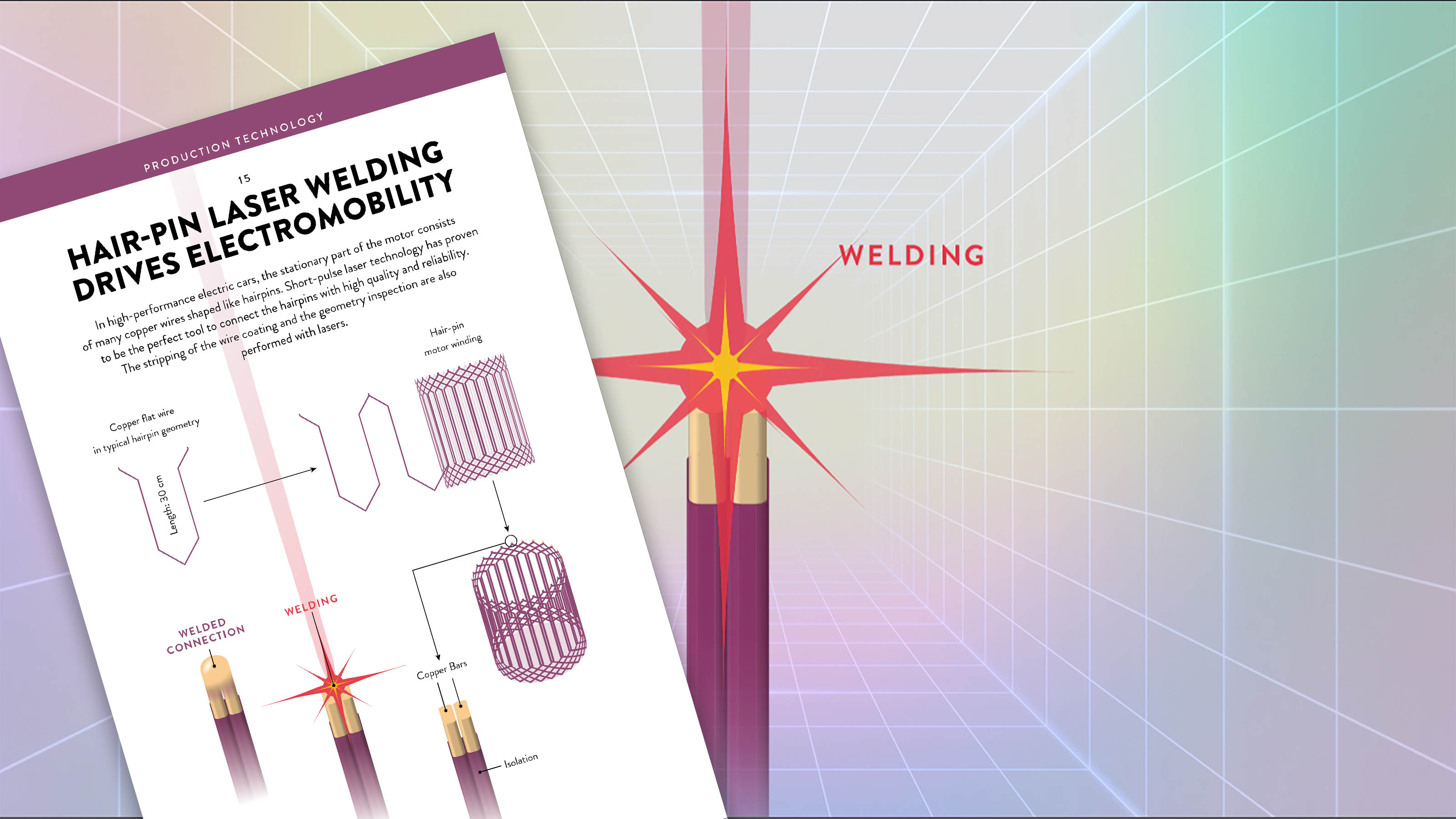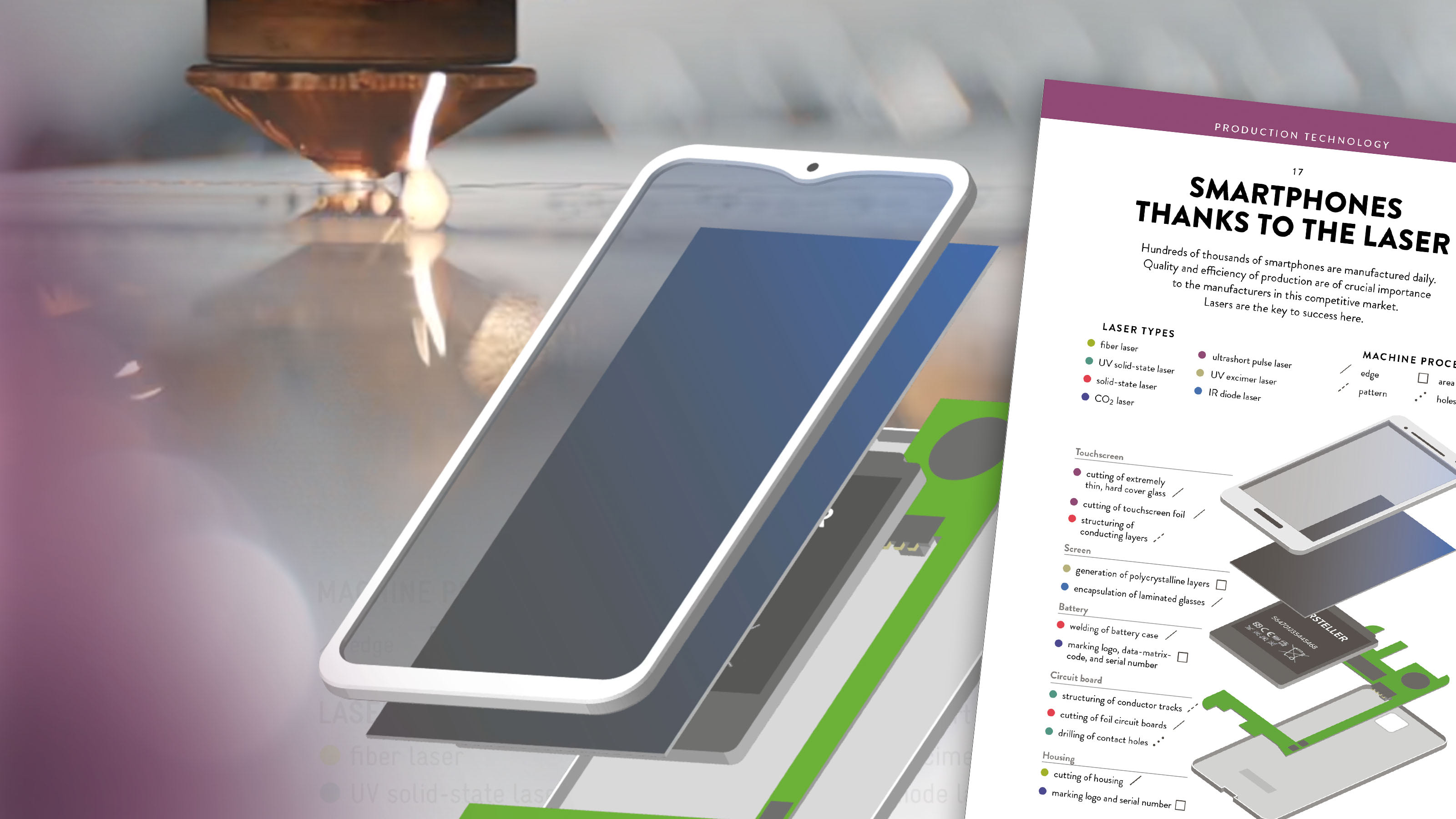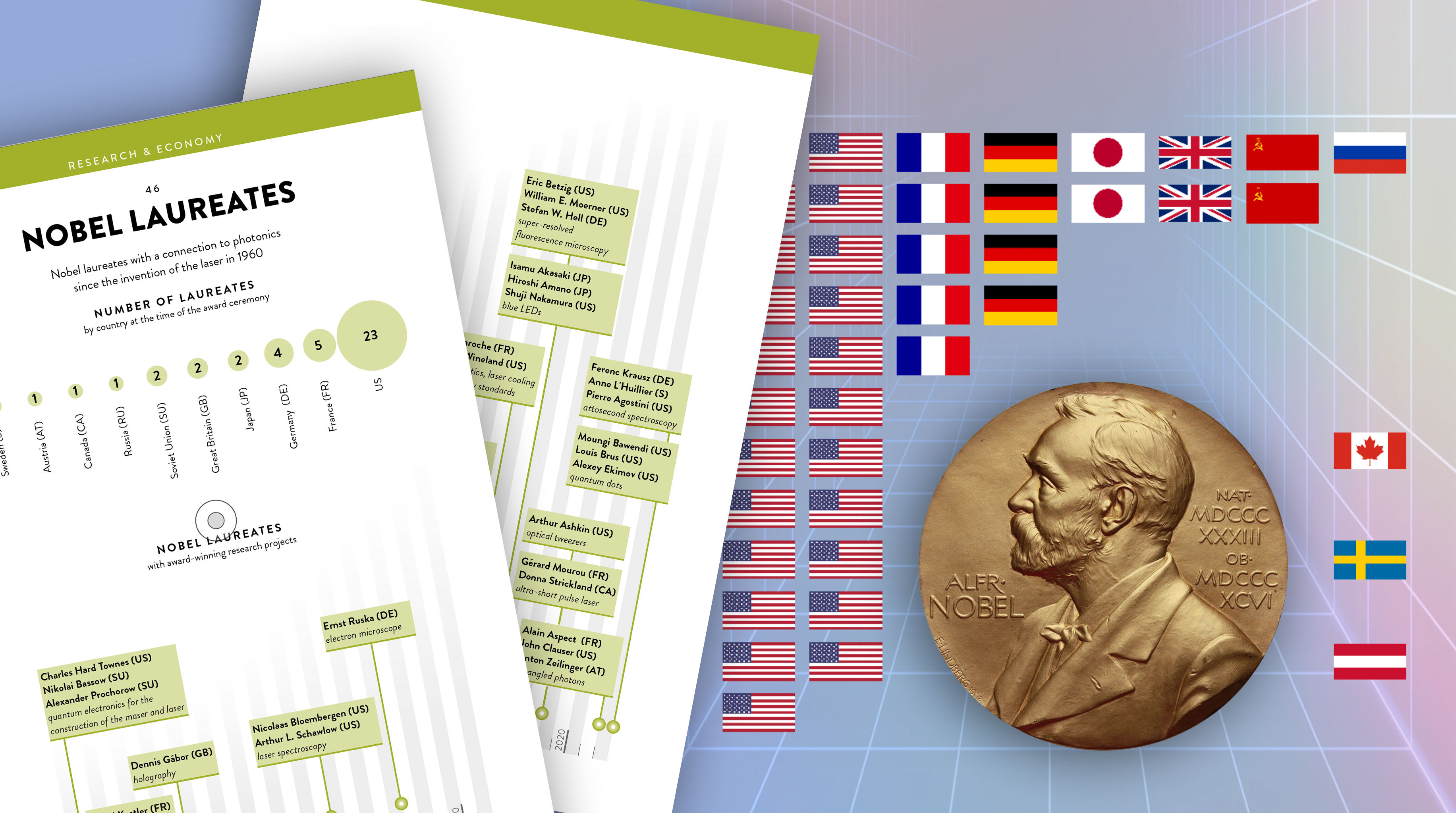Smallest points
We use size comparisons from everyday life to show that light applications take place on smaller scales than we can see with the naked eye.
Highest velocity
Nothing is faster than light. The speed of light is 299,792,458 m/s.
Shortest times
Light makes even the fastest events measurable.
Highest power
With the pulsed operation of lasers, a power orders of magnitude greater than anything we have known before can be achieved. This is made possible through the concentration of laser power to very short femtosecond pulses.
Lasers vs the sun
While conventional light sources emit their energy in all directions, lasers bundle the emitted light very efficiently into almost parallel light beams of small diameters.
Image of smallest structures
Modern technology requires efficient electronics in the smallest spaces. Thanks to optical technologies it is possible to organize increasingly smaller electronic components on semiconductor chips.
Hair-pin laser welding drives electromobility
In high-performance electric cars, the stationary part of the motor consists of many copper wires shaped like hairpins. Short-pulse laser technology has proven to be the perfect tool to connect the hairpins with high quality and reliability. The stripping of the wire coating and the geometry inspection are also performed with lasers.
Laser cutting
Laser cutting enables very quick processing of materials with a low loss of material, which makes this method extremely energy-efficient and sustainable.
Smartphones thanks to the laser
Hundreds of thousands of smartphones are manufactured daily. Qualitiy and efficiency of production are of crucial importance to the manufacturers in this competitive market. Lasers are the key to success here.
3D Printing
Based on a computer drawing, complex structures can be produced from plastics, ceramics, and metals with the help of selective laser melting. Dentures and implants are among the rapidly growing number of applications.
Laser communication in space
Free space optical communication between near-Earth and geostationary satellites enables the fast transfer of data to a ground station. Vital data during natural catastrophes or in emergencies at sea can be received almost in real time in this way.
Camera lenses
Today, brilliant images are possible with the smallest smartphone lenses. Why then is it still necessary to have large lenses in photography?
Glasses for AR & VR
Stereoscopic display goggles immerse users of Virtual Reality (VR) in a completely digital environment, while micro projectors and beam-combiners of Augmented Reality (AR) glasses overlay digital elements onto the real world. More opto-electronic components like cameras and LiDAR front-side displays enable interaction with the environment anywhere between AR and VR.
LCD vs OLED
Today, LCD displays dominate the flatscreen market, but in smartphones, organic LEDs (OLEDs) are conquering an increasingly larger market share. OLED displays are thinner, more energy-efficient, and higher in contrast but more expensive to produce.
Seeing clearly again
From the age of 60 onwards, most people get a slight cataract – known as the grey star. Treating cataracts is the most common operation around the world. For 2022, the WHO reported more than 29 million cataract operations. The use of the femtosecond laser with ultra-short pulses allows a precise and careful operation.
Airport lighting
Millions of new LED lamps lower the operation and maintenance costs of airports around the globe.
Solar cells
Solar cells can transform sunlight directly into electricity. An efficiency of around 48 % has already been achieved under laboratory conditions. In commercial use, efficiency has to be weighed against acquisition costs.
Optical measurements in citizen projects
Smartphones with attachable mini-spectrometers make it possible to map current environmental data of entire countries with the help of thousands of citizens.
Photonics around the globe
Photonics is a global industry today. This graphic shows the strongest market segments in each region. These translate into tremendous economic impact and great career opportunities.
Nobel laureates
Nobel laureates with a connection to photonics since the invention of the laser in 1960



















